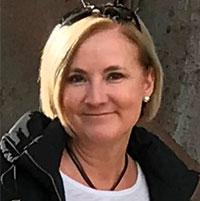Participatory monitoring is a key work package within WaterProtect, since one of the main objectives of the project is to establish new, participatory monitoring approaches where all actors get involved in the assessment and improvement of the water resources quality. Miren López de Alda (IDAEA-CSIC) is responsible for this work package and explains us about the approach and the current status of the work in the action labs.
Traditional water quality monitoring is well known. However, WaterProtect looks further into new monitoring schemes where all possible actors and stakeholders, from water managers to final users, including regulatory bodies, environmental and health agencies, research organizations, water users in the industry, urban and agriculture sectors, and the population in general have something to say and do in relation to the monitoring and improvement of the water resources quality.
To this end, a series of actions to be carried out at each of the seven action labs participating in WaterProtect were planned at the beginning of the project:
- Design of the participatory monitoring approach together with the actors,
- Collection of the existing water quality monitoring data (including surface, ground and drinking water) in the case studies,
- Harmonization of the data for further use in the collaborative management tools being developed under WP 5,
- Design and implementation of additional, targeted participatory monitoring campaigns to evaluate the effectiveness of measures and farming practices, and
- Summary of the lessons learned from the targeted participatory monitoring campaigns for dissemination to other areas.
Within the first 18 months of the project, all action labs have designed a participatory monitoring approach together with their local actors and have collected existing water quality monitoring data on pesticides and/or nutrients (depending on the scenario conditions existing in each case study) from the different actors and sources. Information sources include national/regional water agencies, drinking water production plants, local farmers/water users associations, scientific literature and any other source potentially available.
Collaborative webtools
In addition, all action labs have created harmonised datasets for their subsequent integration and visualization in the corresponding case study collaborative management tool. This will allow the actors in the action lab to create transparency on the water quality status, and to evaluate the effects of mitigation measures on the longer term. The format selected in each case study has been decided taking into consideration the format used in the available databases/platforms.
Better monitoring for deeper insight
Finally, all case study participants have designed (and initiated) a targeted participatory monitoring on the basis of the information gathered and the main identified gaps. In some cases, the planned monitoring aims at producing the first data ever available for the area of study, as it is the case for certain pesticides in the vineyards of Val Tidone (Italy). In others the objective is (i) to screen the area for plant protection products or nutrients in order to identify the most critical compounds and sites upon which focusing potential mitigation measures to improve the overall water quality of the zone, (ii) to evaluate the effect and contribution of rain events, erosion and/or runoff processes on pesticides loads, as in Belgium or Ireland, (iii) to identify the source (either inorganic or organic) of nutrients pollution through isotopic analysis, as planned in Poland or Spain, (iv) to evaluate the efficiency of new best management practices (BMPs) implemented within the project, as foreseen in various of the sites, or (v) to simply get involved additional actors, such as school children, in the monitoring, as done in Romania through the use of simple kits for analysis of nitrogen species in groundwater.
Better monitoring for deeper insight
In the coming period WaterProtect will complement the water quality datasets with the results of the additional, targeted participatory monitoring campaigns, and the data compiled in each case study will be jointly examined by the various stakeholders and actors involved to provide a clear picture of the potential sources of contamination and ways to effectively identify, control and counteract them. Finally, the lessons learned at case study level will be summarized and shared in a common document with guidelines for future, more efficient and sustainable participatory monitoring practices.

